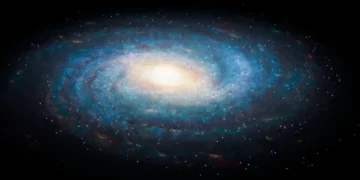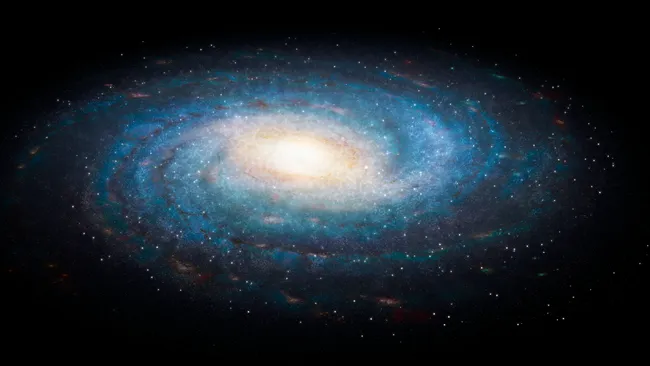Shifting the SETI Paradigm: A New Approach to the Search for Extraterrestrial Civilizations
The search for extraterrestrial life has captivated humanity for decades, fueling imaginations and driving scientific exploration. Central to this quest has been the famous Drake Equation, which attempts to estimate the number of communicative civilizations in our galaxy. Despite its historical significance, recent studies by astronomers David Kipping and Geraint Lewis suggest that the Drake Equation may be too narrow in scope, and perhaps, it’s time to broaden our thinking. Their research introduces an exciting new perspective on the Search for Extraterrestrial Intelligence (SETI), encouraging the community to reimagine its approach. But what does this new approach entail, and why is it so significant?
The Drake Equation: A Groundbreaking Yet Limited Tool
The Drake Equation, formulated by astronomer Frank Drake in 1961, was a groundbreaking tool in the search for alien life. The equation incorporated variables like the rate of star formation, the fraction of stars with planets, and the likelihood of intelligent life developing communication technologies. The purpose of this equation was to provide an estimate of how many civilizations might exist in our galaxy capable of making contact.
However, the Drake Equation is not without its limitations. As David Kipping and Geraint Lewis point out, many of the parameters used in the equation are based on educated guesses rather than hard evidence. For instance, we have little concrete data on how often life emerges on habitable planets or how long civilizations capable of communication survive before disappearing. This reliance on speculative inputs has led to wildly varying results depending on who is doing the estimating.
The Drake Equation’s simplicity is both its strength and its weakness. While it helps to organize our thinking around the key factors that might influence the number of extraterrestrial civilizations, it also locks us into a limited frame of reference. Critics have argued that the equation reduces a vast and complex issue into a simple numbers game that may obscure more than it reveals.
Kipping and Lewis believe that the Drake Equation, though useful for sparking conversation, might have unintentionally constrained our imagination by forcing us to focus too much on uncertain variables. They propose a fresh approach that simplifies the equation while offering new insights into the search for intelligent life.
Introducing the Birth-Death Equation: A New Lens on SETI
Kipping and Lewis’ new approach is as elegant as it is radical: rather than focusing on multiple complex variables like the Drake Equation does, they propose using a “birth-death” equation to model the rise and fall of civilizations. This model, as the name suggests, focuses on just two fundamental events for any civilization: its birth and its death.
The birth-death equation reduces the search for extraterrestrial life to its most essential elements. Civilizations, like stars, are born and eventually die. By focusing on these two factors, Kipping and Lewis argue that we can gain a clearer understanding of the likelihood of civilizations existing at any given time.
This approach offers a new way to explain the so-called “Great Silence” that has puzzled scientists for years. If intelligent civilizations are born and die at different rates across the galaxy, it’s possible that we simply live in a time when such civilizations are rare or have not yet developed the technology to communicate across vast interstellar distances.
The birth-death equation also offers an explanation for why we haven’t yet detected any alien signals: it could be that civilizations tend to die off relatively quickly after achieving the ability to communicate, or they may exist during periods when we are not technologically advanced enough to detect them. This sobering thought challenges the optimism that often accompanies discussions of SETI but offers a plausible explanation for the lack of success so far.
Looking Beyond the Milky Way: The Case for Extra-Galactic SETI
One of the most exciting implications of Kipping and Lewis’ birth-death model is the possibility that we should be looking beyond our own galaxy for signs of intelligent life. According to their research, the Milky Way may be unusually quiet, not because intelligent civilizations don’t exist, but because we happen to live in a relatively unpopulated region of the universe.
This idea, while intriguing, has profound implications for SETI. If the birth and death rates of civilizations differ between galaxies, it stands to reason that our best chances of finding alien life might lie beyond the Milky Way.
The universe is unimaginably vast, and our galaxy is just one of many. If life is more common in other galaxies, then focusing exclusively on the Milky Way could severely limit our chances of success.
The extra-galactic approach to SETI opens up new possibilities for discovery. It encourages scientists to think beyond the constraints of our own galaxy and to explore the wider universe for signs of life. This shift in focus could lead to new methods of detection and a broader understanding of where and how intelligent life might thrive.
By expanding the search beyond the Milky Way, Kipping and Lewis suggest that we may be able to overcome some of the limitations that have hampered previous SETI efforts. This bold new approach challenges the traditional view of where to look for extraterrestrial civilizations and encourages us to think on a truly cosmic scale.
The Fine-Tuning Problem: A Challenge for SETI Optimists
While Kipping and Lewis’ research offers exciting new possibilities, it also raises important challenges for SETI optimists. One of the key issues they address is the so-called “fine-tuning” problem, which posits that for intelligent life to be abundant in the universe, the conditions that allow civilizations to arise and persist must be finely tuned.
The fine-tuning problem suggests that the conditions necessary for intelligent civilizations to emerge may be so specific and rare that the chances of finding another one are exceedingly low. Kipping and Lewis argue that this presents a serious challenge to the more optimistic assumptions often made by SETI researchers.
For SETI optimists to be correct, the universe must be finely tuned in such a way that civilizations can thrive in a delicate balance. However, given the vastness and variability of the cosmos, Kipping and Lewis caution against this level of optimism. They point out that current observations suggest a largely empty universe, where the conditions for life may not be as common as we hope.
This fine-tuning problem forces us to confront the possibility that intelligent life may be far rarer than we would like to believe. The conditions required for civilizations to develop and sustain themselves over long periods may be so specific that only a few civilizations ever reach the stage of detectable communication. This sobering thought challenges the optimism that has often driven SETI efforts but also provides a more realistic framework for future research.
Continuing the Search: Why SETI Is Still Vital
Despite the challenges posed by the fine-tuning problem and the birth-death equation, Kipping and Lewis remain advocates for continuing SETI research. They argue that even though the odds of success may be slim, the potential discovery of extraterrestrial intelligence would represent one of the most profound scientific achievements in human history.
The search for extraterrestrial life is not just about finding aliens; it’s about exploring the limits of our knowledge and expanding our understanding of the universe. Even if the chances of success are low, the rewards would be monumental. A single discovery could fundamentally alter our understanding of life, the universe, and our place within it.
Kipping and Lewis’ research serves as both a reality check and a call to action. It reminds us that the search for extraterrestrial intelligence is fraught with challenges and uncertainties, but it is a quest worth pursuing. The universe may be vast and largely empty, but the possibility of finding another form of intelligent life continues to inspire and drive scientific exploration.
By moving beyond the constraints of the Drake Equation and adopting the birth-death model, they encourage SETI researchers to expand their imagination and consider new possibilities. Their work pushes the boundaries of our understanding and urges us to explore the universe in ways we haven’t before.
While their research may cast doubt on the likelihood of finding other civilizations in the Milky Way, it also opens up new avenues for exploration and discovery. By looking beyond our own galaxy and adopting a broader perspective, we may be able to uncover new insights into the nature of life in the universe.
Reference:
Kipping, D., & Lewis, G. (2024). “Do SETI Optimists Have a Fine-Tuning Problem?” International Journal of Astrobiology. Available on arXiv: https://arxiv.org/abs/2407.07097.



















